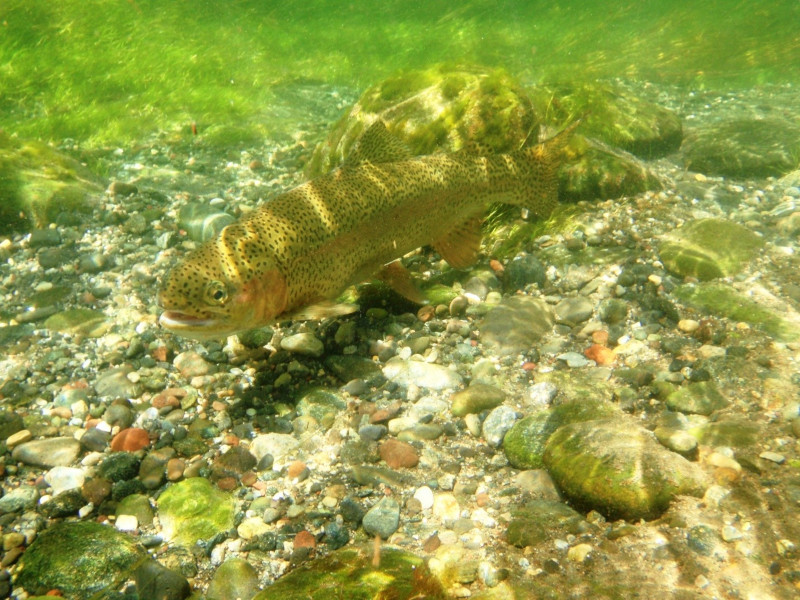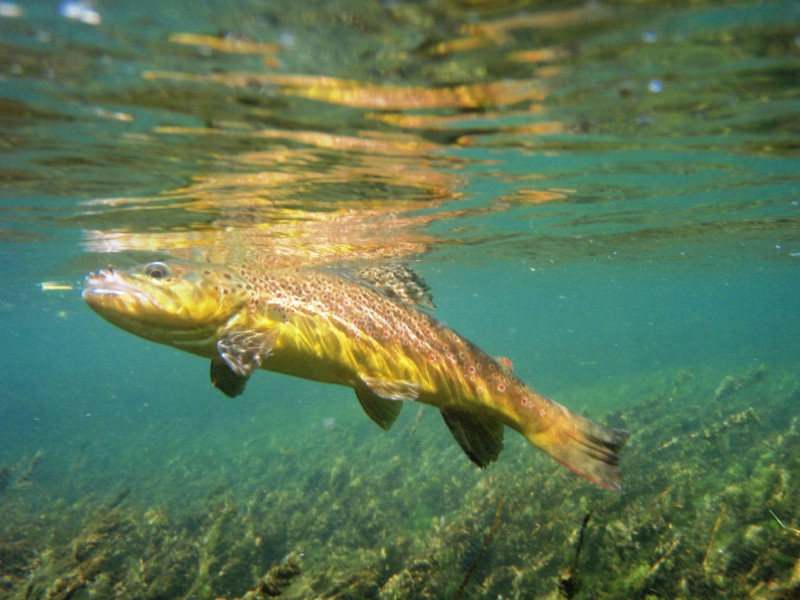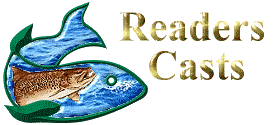FLY FISHING THE SPORT OF ILLUSION

“Sometimes we think that we know a great deal about trout and fly-fishing, again that we are absolute ignoramuses. At least I find many of the best anglers everywhere diffident in expressing their opinions and loath to lay down the law. We are constantly learning and unlearning.”
The Complete Fly Fisherman, The Notes and Letters of Theodore Gordon
Edited by John McDonald, Page 38
As fly anglers we are illusionists, our audience is the trout, whereas someone like David Copperfield of today or Harry Houdini of yesteryear created their illusions for people and down through time both have been suitably fooled.
Some would think that it is only the imitation or fly that is the illusion for trout, however the imitation is only one of many parts of the illusion and those who study their craft become some of the most successful trout illusionist.
The fly angler’s must carefully plan their illusion; therefore, the first step is to location their intended targets and observe their actions, then plan their approach so they may position themselves as close as possible and practical based on the situation encountered.
Then if the proper presentation angle is taken and the proper imitation is used and manipulated in a manner to mimic the actions of the naturals that the trout are feeding on, then the illusion will be successful. Simple, right! Yet if all the factors are not followed or the drift line or the presentation is flawed, then the illusion will often fail, and the illusionist will be frustrated.
On March 14th, 1903 Theodore Gordon wrote *“Because too much faith is placed in the patterns and not in the observation of the feeding behavior and presentation”. Unfortunately, this still goes on today.
There are times and place where the chore of the angler/illusionist is easier and on these outing our confidence soars, however that should be tempered with the realization of the degree of difficulty involved in the situation encountered. These easy encounters will balance out some of more challenging encounters and in all cases practical experience is gained.
Now I will go through many of the points that are necessary for the angler/illusionist to master to be successful in creating the proper illusion. Let us begin with equipment; The tackle of today is far superior to that the early anglers had to deal with and today everyone has their own favorite brands of fly rod, reels, fly lines, leaders and tippets. However, the proper choice is the combination that will easily do the tasks required in the delivery of the imitation under the condition encountered.
Now, I know that in todays fly fishing world the light line rods of the two, three and four weight class are popular and personally I have a favorite four weight, however I also carry both five and six weight systems in case of wind, or some other unforeseen event or condition requires a heavier rod system. So, use your favorite rod system but go prepared.
The next item to discuss are casting skills, learning to cast and learning what you can do with the rod is very important, mending skills, line manipulation and accuracy are all very important. You can look at books, DVD, attend casting clinic or take lessons from a casting instructor, however it is then practice, practice and more practice. One additional piece of advice and that is to practice when possible on the water, trout are never caught on the grass of dry land. Also, the distances worked on should very from 15 to 35 feet, seldom do you need longer cast, if so, try moving closer to your target.
Another skill which the angler/illusionist must master is approach, proper wading and movement in a trout stream is critical to accomplish the proper illusion. This take practice and patience and observation. Stumbling over the bottom, tripping over rocks, branches and stepping into depressions will definitely spook you intended target and may in fact spook several trout spoiling your chance of creating the proper illusion. Slow movements are the best and wearing polaroid fishing glasses which will allow you to see into the water. As the light fade, movement is accomplished by feel and slow, very slow movements. I practice all time, seeing how close I can move to a feeding trout without disturbing the rhythm of its feeding. With practice you be surprised how close you can approach, the closer you are, the more you can observe, gaining a better understanding of where in the water column the trout is feeding and how it is feeding, all knowledge which will help you create a better illusion.
Observation is another critical skill which the angler/illusionist must develop. The angler must learn to watch and observe everything in the water and on the water. Learning to see trout in the water requires patience, time and curiosity. Again, polaroid sunglasses will greatly assist in this endeavor, only should you observe the trout but also the food forms that the trout feed. Next learn watch what the insects are doing when the trout are feeding on them, this will allow you create a better illusion.
Also learn to read the currents and watch how the currents move and how the trout position themselves when they are feeding. By watching the insects, you learn that sometimes dead drift presentations are needed and sometimes that the imitation need to be moved to create the prefect illusion for the trout.
You can take bit of grass or twigs to see how the current move objects on the water.
Also, the angler/illusionist should become familiar with the known facts about the various species of trout. This information is readily available in any number books, and if you prefer much of this same information can be found on-line. Becoming familiar with the known information on the various species of trout will also help when you are observing the trout in the natural habitat. However, there is still much to be learned through observation, science has told us much about the trout both on a physical level and on a behavioral level. But we have a difficult time in writing and understanding the instinctual behavior of the trout, and there are still many questions to be asked and explored. We talk the trigger point of feeding, but the two main points are food availability and hunger. However, what makes a trout feed on an adult may fly which is moving on the surface and yet ignore one which is dead-drifting, this we may never understand, yet observation of the day, may allow the angler/illusionist to solve the problem of the moment. Remember none of the trout’s actions are cast in stone and will vary from encounter to encounter and it is these constant changes which challenges the angler/illusionist.
Now we come to the imitations, which are the final part of creating a successful illusion to fool the trout. Recently I was re-reading The Complete Fly Fisherman, The Notes and Letters of Theodore Gordon which edited and published by John McDonald in 1947. For those who have an interest should read it, you will find highly interesting. Theodore Gordon lived from 1854 to 1915 and much of what wrote is highly interesting and fits into the present day. Anyway, I ran across a passage which applies to the subject of imitations that we are presently discussing; “Trout take a fly when it is all chewed up sometimes. It does not look like anything to us, but to them it may be the exact color of a fly that is or has been hatching out, and they take it as larva or nymph from its case. I have, when not able to make a really good imitation of fly upon which the trout were feeding, contented myself with a body of the right color and a few turns of almost any feathers of the right shade. This will kill better than a well-formed fly of the wrong color, though greater accuracy is desirable.”
Any angler who has fly fished for a reasonable period of time has experienced what Gordon wrote about. I believe that if the general color scheme is apparent in the in the imitation and the materials used impart the general illusion of life, then is presentation is proper, then the illusion should be successful.
Hopefully, the words I have written will inspire you to learn, investigate and create your own successful illusions and it is these illusions are what keep us so fascinated with the endeavor call fly fishing.
In closing I will share two more quotes from Theodore Gordon which has always inspired me as an angler, fishing guide, fly tier and author.
“Experience is the great teacher, and it that of many could be brought together, we would know far more than we do of many things bearing upon our art.”
“The man who keeps everything he learns locked up in his own breast will know far less then he who compares notes with his fellows.”

The results of a successful illusion.
Enjoy & Good Fishin’
Tom Travis, Livingston Montana
